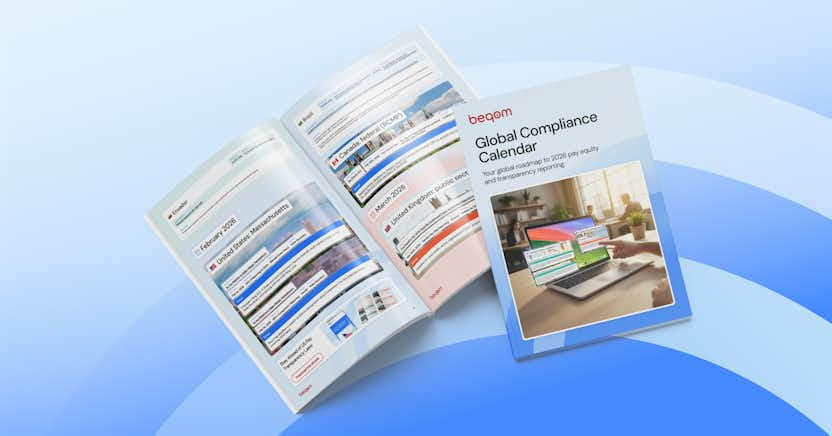Helping your Employees to Combat Professional Isolation

Learn more about the following beqom products
May is Mental Health month, but in recent times it seems that every month needs that focus. Since the start of the pandemic, issues of “mental health” have been mentioned with increasing frequency during performance check-ins. Often, our managers aren’t prepared for these conversations and are ill-equipped to advise and take the right next steps.
As organizations, managers, and HR practitioners, we often don’t realize the impact we can have on our people’s mental health. As we move to more dispersed teams and remote working arrangements, the potential for not realizing when someone is suffering from professional isolation becomes far greater. So how can we help our people deal with mental health issues without the powers of real-time observation that we have in the office?
There are a number of practical steps you can take now that make all the difference to the humans behind the Zoom/Teams meeting.
Provide mentors
Recent research has shown that the introduction of mentors has a highly positive correlation with reducing professional isolation. Often having someone to talk to, to whom you don’t directly report or hold accountability can be a powerful means of removing the isolation that can build up over time in remote working environments. It’s a simple, cost-effective, and easy means of introducing a support measure to your people.
Facilitate validation
While differing people will have different reactions to remote working, it’s fair to say that some of our colleagues will be missing the interaction and the external validation they often receive in working life. Moments of validation come in a myriad of forms in office life – such as engagement and agreement during meetings, a smile at the coffee corner, or a quick “well done” from the boss as they pass your desk. All these individual moments are lost to us in a remote working environment. As such, there is a need to heighten moments of recognition and put routines in for managers to purposefully recognize someone on the team. “Feedback Fridays” or appreciation moments can be powerful reminders to managers to recognize and keep the feedback flowing.
Ensure regular check-ins
Often employees can experience heightened anxiety when missing the presence of the office. Concerned that they are not being asked to the right meetings or involved in the right level of decision-making, the fear of missing out becomes very real and sometimes distorted in a remote setting. Ensuring managers are checking in with their people in a routine way facilitates an open discussion to reassure their employees that all is well and identify if they are falling out of communication loops. A greater frequency and regularity of one-to-one meetings is key here, ensuring that managers are checking in on their people.
Humanize the check-in experience
Check-ins will also need to take a different form. Traditionally, it was tempting to fall into a pattern of discussing the work, and not necessarily the human behind the work. It’s more important than ever to humanize the experience and ensure that managers are kicking off those check-ins by asking their employees how they are coping. Some early conversational starters can be helpful guidance for managers to get them through those early parts of the conversation with ease. Guides, tips, or even a short course can be helpful to managers to have those conversations that may lead to the identification of an employee who’s struggling.
Six ways to raise community spirit
It’s long been understood that community is a great means of lifting spirits, keeping everyone connected, and gaining the camaraderie of being in it together. It’s never been more pressing to raise the level of community spirit in your organization. Here are some quick wins that can create the connection that most of your people will crave:
- Overcommunicate. Your people want to know what’s going on and they will have concerns. Open communication about the challenges will create a trusted environment. Showing resilience and optimism in your leaders will also reassure and demonstrate that you all work toward a common goal.
- Have very clear goals. When people feel more part of something bigger than themselves, it’s uplifting and creates a sense of purpose. Being very clear about goals and linking them to wider departmental or organizational goals can bring a great sense of mission and purpose to an individual.
- Harness the power of the crowd. Launch virtual coffee meets. Pair people together who’ve never met and let them get to know each other over a virtual cup of java.
- Create virtual networks. Networking is key to combatting professional isolation, so creating virtual moments where people can gather to get to know each other and perhaps learn together can be really powerful. Everything from cooking classes to personal development has been tried and tested to great impact.
- Facilitate peers to give each other feedback. It is important to recognize each other for a job well done. Feedback from peer to peer adds to that sense of everyone working together and appreciating each other.
- Support growth. Give people opportunities to grow and personally develop by adding to your learning suite. Resilience programs or 360 can be really useful in helping your people discover their best selves.
Raise resilience
In the last few years, there is no doubt that resilience has been required. But resilience throughout your organization may eventually start to flag over time. There are several means to diagnose the resilience and agility in both your organization and in the individual, giving you a gauge of whether interventions are required to raise the resilience of your people. HR can take a proactive role in this by measuring resilience and then identifying where the concerns may lie.
The right tools can make a big difference
HR can use a range of employee experience platforms and tools – such as beqom CPM – to heighten communication throughout the business. One feature to use is pulse surveys, which measure the resilience and indeed the morale of your people. While you may want to avoid an overzealous approach that leads to survey fatigue, pulse surveys on a monthly basis can be a great means of checking in with your people and identifying if there are interventions that would help. beqom CPM offers a range of features that benefit the employee, manager, HR department, and business performance as a whole – including pulse and agility surveys.
Make caring a part of Workplace 2.0
Finally, mental health can suffer when employees develop the sense that nobody sees them and nobody cares. A remote workplace can increase that risk if the right structures are not put in place. Giving employees a voice and a sense of community will help to overcome those feelings of professional isolation. Asking our managers and leaders to take care and take note when they have concerns for their people can make all the difference.
There are many processes in HR where we can rehumanize the experience for our people. We shouldn’t be shy about trying new things in this “Workplace 2.0” world to transform our processes and our people management strategy.
Are you looking to improve how you give and receive feedback throughout your organization? Let beqom help you by booking a meeting with one of our performance management experts here.
Download beqom’s 2023 Leveling the Paying Field Report to get a sense of employee experiences and perspectives on the gender pay gap, pay transparency, and other aspects of compensation.








